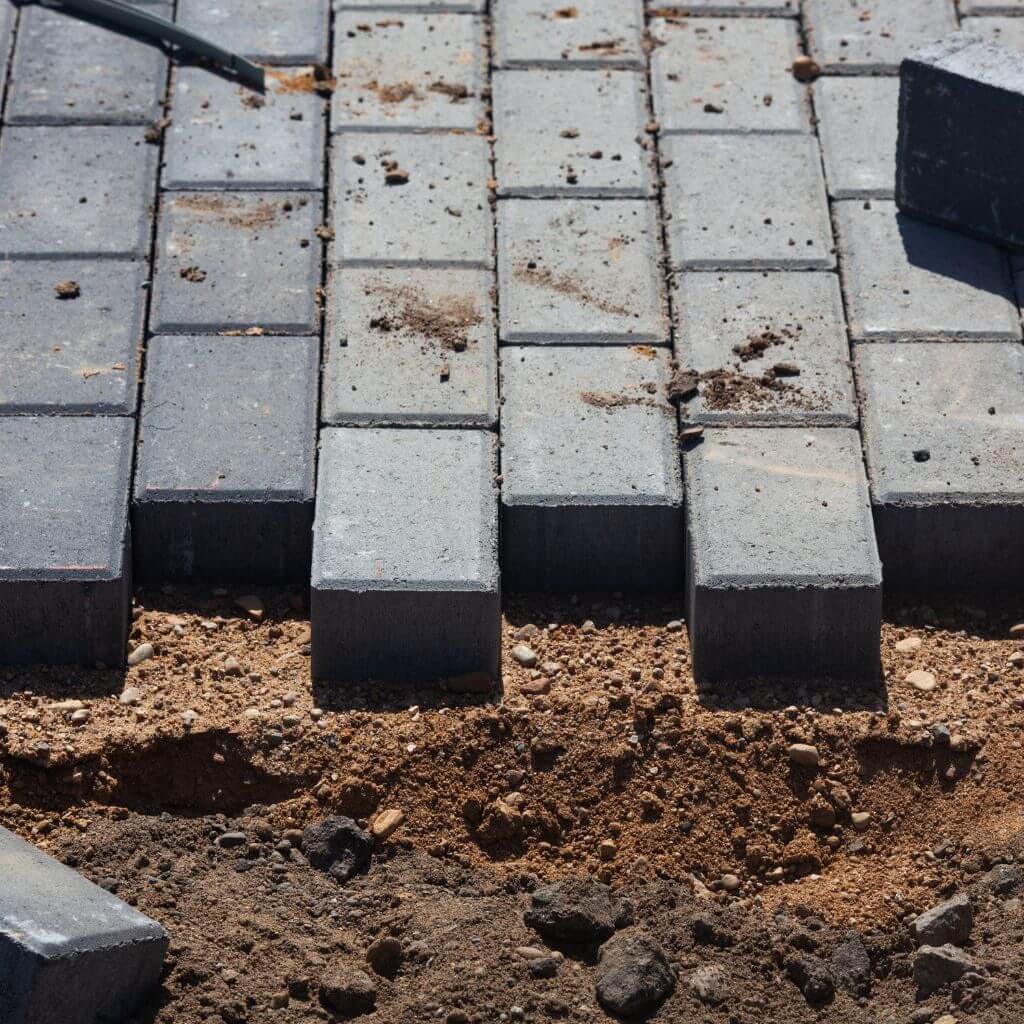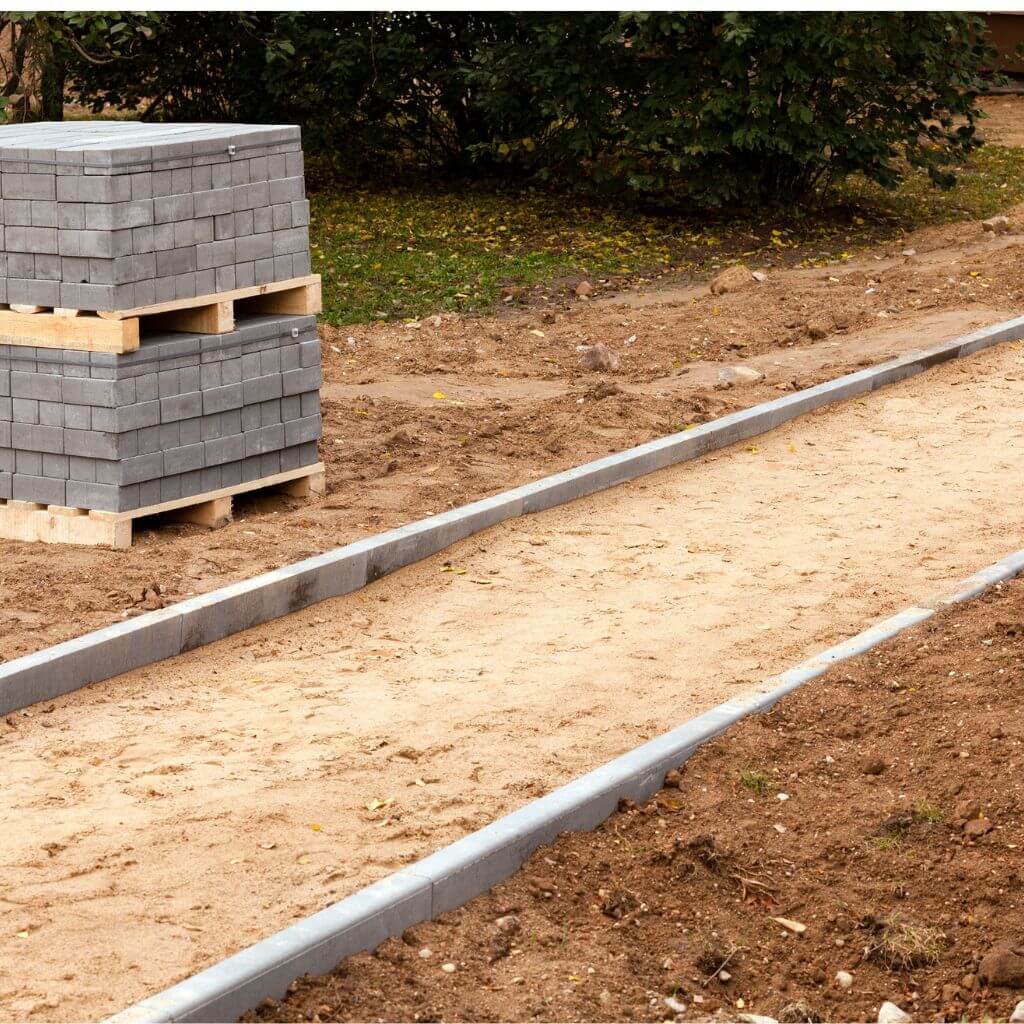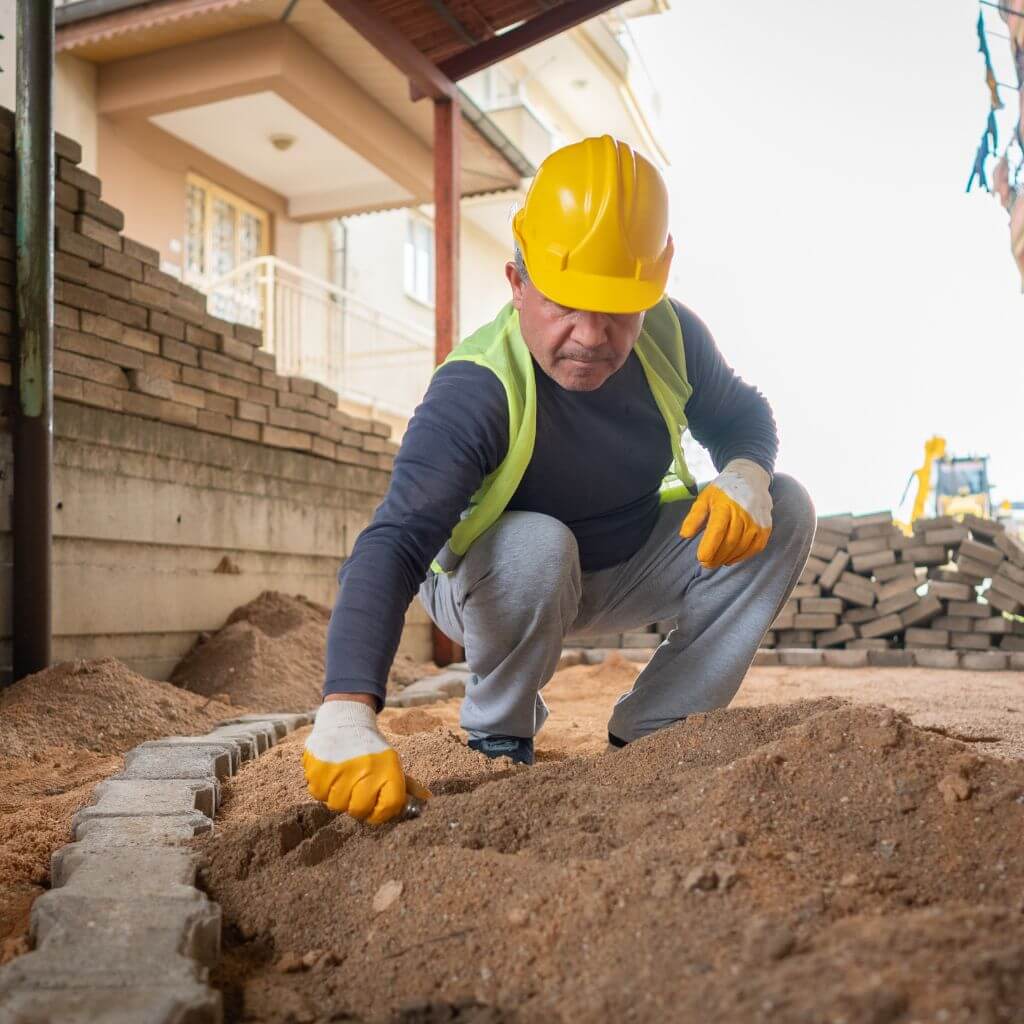
Are you planning on paving your driveway or patio and need to choose the right dry mix cement for paving? Look no further! In this article, we will guide you through the process of selecting the perfect dry mix cement for your paving project.
From considering your specific needs and preferences to understanding the different types of cement available, we’ve got you covered. By the time you finish reading, you’ll be well-equipped with the knowledge to confidently choose the ideal dry mix cement for your paving needs.

Understanding Dry Mix Cement for Paving
Definition of dry mix cement
Dry mix cement, also known as dry mix mortar or dry mortar, is a mixture of fine aggregate, cement, and additives that is specifically designed for use in pavement construction. Unlike traditional cement, which comes in a wet form and requires curing, dry mix cement is premixed and requires only the addition of water before application. It offers several advantages over wet cement, such as ease of use, faster installation, and enhanced durability.
Advantages of using dry mix cement for paving
Using dry mix cement for paving projects offers numerous benefits. Firstly, it simplifies the construction process since the dry mix is preblended and ready to use, eliminating the need for on-site mixing. This saves time and effort. Additionally, dry mix cement allows for faster installation, as it dries and sets quickly, resulting in reduced project duration.
Moreover, dry mix cement offers enhanced durability compared to traditional wet cement. It is specifically formulated to withstand heavy traffic loads, extreme weather conditions, and other stresses that pavements typically endure. This makes it an ideal option for paving projects that require long-lasting and robust surfaces.
Factors to Consider
Project requirements
Before choosing a dry mix cement for your paving project, it is crucial to assess and understand the specific requirements of the project. Consider factors such as the desired thickness of the pavement, the expected traffic load, and the specific surface type. These requirements will influence the choice of dry mix cement as different mixes have varying properties and performance characteristics.
Climate conditions
The climate conditions of the project location play a significant role in determining the suitable dry mix cement. Areas with high humidity or extreme temperatures may require special cement mixes that are formulated to resist cracking, shrinkage, or expansion due to climatic factors. Consider the local climate conditions to ensure the longevity and performance of the paved surface.
Traffic load
The anticipated traffic load is another important factor to consider when selecting a dry mix cement. High-traffic areas, such as roads or parking lots, require mixes with higher strength and durability to withstand heavy vehicular loads. On the other hand, low-traffic areas, such as residential driveways, may not require as robust mixtures. Evaluating the expected traffic load will help determine the appropriate dry mix cement strength.
Surface type
The type of surface where the dry mix cement will be applied is also a critical consideration. Different surfaces, such as concrete, asphalt, or interlocking pavers, may require specific dry mix cement formulations to ensure proper adhesion and performance. Assess the surface type to choose the right dry mix cement that is compatible with the existing materials.
Budget constraints
Budget constraints are often a significant factor in any construction project, including paving. Dry mix cement options vary in cost, with some specialized formulations being more expensive than others. Consider your budget limitations and balance it with the desired quality and longevity of the paved surface. Consult with professionals to find a suitable dry mix cement that meets both your project requirements and budgetary constraints.
Types of Dry Mix Cement
Portland cement-based mixes
Portland cement-based mixes are the most commonly used dry mix cements for paving projects. They consist of a blend of Portland cement, sand, and other additives, such as lime or silica fume. Portland cement-based mixes offer excellent adhesion, strength, and durability, making them suitable for various pavement applications.
Polymeric sand mixes
Polymeric sand mixes are dry mix cements that contain polymer additives. These additives act as binding agents and improve the overall bond strength of the cement. Polymeric sand mixes are often used for joint filling between interlocking pavers and are known for their excellent resistance to weed growth and erosion.
Polymer-modified mixes
Polymer-modified mixes combine traditional cement with polymer additives, such as latex or acrylic resins. These additives enhance the flexibility, adhesion, and waterproofing properties of the cement. Polymer-modified mixes are commonly used for overlays and repairs, as they offer improved crack resistance and durability.
Epoxy-based mixes
Epoxy-based mixes are a specialized type of dry mix cement that includes epoxy resins. These resins provide exceptional strength, chemical resistance, and bond properties. Epoxy-based mixes are often used in high-traffic areas or areas exposed to harsh chemicals, such as industrial settings or commercial parking lots.
Choosing the Right Cement Mix
Identifying the project requirements
To choose the right dry mix cement, start by identifying the specific requirements of your paving project. Consider factors such as the desired thickness, traffic load, surface type, and climate conditions. Based on these requirements, consult with professionals or manufacturers to determine the most suitable dry mix cement for your project.
Considering climate conditions
Take into account the climate conditions of the project location. If the area experiences high humidity or extreme temperatures, opt for dry mix cement formulations that are specially designed to withstand these conditions. This ensures that the paved surface remains intact and durable despite the challenging climate.
Evaluating traffic load
Evaluate the anticipated traffic load on your paved surface. Heavy traffic areas, such as highways or commercial parking lots, require cement mixes with higher strength and durability. On the other hand, low-traffic residential areas may not require as robust mixtures. Select a dry mix cement that can withstand the expected traffic load and provide the necessary longevity.
Selecting the appropriate surface type
Consider the existing surface type where the dry mix cement will be applied. Different surface materials require specific cement formulations to ensure proper adhesion and compatibility. Ensure that the chosen dry mix cement is appropriate for the surface type, whether it is concrete, asphalt, or interlocking pavers.
Working within budget constraints
While it is essential to choose a high-quality dry mix cement for paving, it is also necessary to work within your budget constraints. Discuss your budget limitations with professionals to find a suitable dry mix cement that offers the desired durability and performance without exceeding your financial resources. Balance the cost with the long-term benefits to make an informed decision.

Common Dry Mix Cement Additives
Fiber reinforcement
Fiber reinforcement additives are often added to dry mix cement to enhance its tensile strength and reduce cracking. Fibers, such as polypropylene or glass fibers, are dispersed throughout the cement mix, creating a reinforced structure that can withstand bending and deformation better than plain cement.
Accelerators
Accelerators are additives used to speed up the curing time of dry mix cement. They are particularly useful in colder climates or situations where rapid installation is required. Accelerators allow the cement to reach its desired strength more quickly, reducing project duration and ensuring the pavement can be used sooner.
Retarders
On the opposite end, retarders are additives that slow down the setting and curing process of dry mix cement. They are beneficial in hot weather conditions or when a longer working time is needed. Retarders prevent premature drying of the cement, allowing more time for proper placement and finishing.
Water reducers
Water reducers, as the name suggests, are additives that reduce the amount of water needed for the cement mix while maintaining workability. By reducing the water content, water reducers improve the strength, durability, and bond of the dry mix cement. They are especially useful in areas where water scarcity or excess moisture is a concern.
Air entrainment agents
Air entrainment agents are additives that create tiny air bubbles within the dry mix cement. These bubbles improve the freeze-thaw resistance of the cement, preventing cracking and spalling caused by water expansion during freezing conditions. Air entrainment agents are particularly important in regions with cold climates or frequent temperature fluctuations.
Importance of Mix Ratios
Understanding mix ratios
Mix ratios refer to the proportion of cement, aggregate, and water in a dry mix cement mixture. The mix ratio determines the strength, workability, and durability of the cement mix. It is essential to follow the recommended mix ratios provided by the manufacturer to ensure optimal performance and avoid issues such as weak or brittle pavements.
Effects of improper mix ratios
Using improper mix ratios can have significant consequences on the performance of the dry mix cement. Insufficient cement content can result in weak pavements that are prone to cracking, while an excessive cement content can lead to shrinkage and increased costs. Similarly, incorrect water-to-cement ratios can result in poor bond strength and reduced durability.
Finding the optimal mix ratio for paving
To find the optimal mix ratio for your paving project, consult with professionals or manufacturers who can provide guidance based on your specific project requirements. They can advise on the ideal proportion of cement, aggregate, and water that will ensure the best results in terms of strength, workability, and longevity.
Consideration for Joint Filling
Importance of proper joint filling
Proper joint filling is crucial for maintaining the integrity and functionality of a paved surface. Joints are the spaces between individual paving units, such as interlocking pavers or concrete slabs, and need to be adequately filled to prevent weed growth, water infiltration, and shifting of the units. Failing to fill joints properly can lead to premature pavement deterioration.
Different joint filling materials
Several materials can be used for joint filling in dry mix cement paving projects. Common options include polymeric sand, which hardens when exposed to water, providing a stable and weed-resistant joint. Other materials, such as cement-based grouts or epoxy-based joint fillers, may be suitable for specific applications or high-traffic areas. Choose the appropriate joint filling material based on your project requirements and the desired aesthetics.
Selecting the right joint filling material
Selecting the right joint filling material depends on factors such as the type of pavement, the anticipated traffic load, and the desired longevity. Consult with professionals or manufacturers to identify the most suitable joint filling material for your specific project. Consider factors such as durability, weed resistance, ease of installation, and compatibility with the dry mix cement.
Paving Surface Preparation
Cleaning and clearing the surface
Proper surface preparation is essential for ensuring the longevity and performance of the paved surface. Start by thoroughly cleaning and clearing the area of any debris, vegetation, or loose materials. Remove any existing pavement or deteriorated sections that may compromise the stability of the new pavement.
Repairing cracks and potholes
Inspect the surface for any cracks, potholes, or damaged areas. Repair them using appropriate techniques and materials before applying the dry mix cement. Filling and sealing cracks, and leveling any uneven sections, will create a smooth and stable base for the paving.
Applying primer if necessary
In some cases, an appropriate primer may be necessary before the application of the dry mix cement. Primers improve adhesion, promote bonding, and prevent moisture migration from the substrate. Consult with professionals or manufacturers to determine if a primer is required for your specific project and follow the recommended application procedures.
Ensuring proper drainage
Proper drainage is crucial for preventing water accumulation and potential damage to the paved surface. Ensure that the area is properly sloped to allow water to flow away from the pavement. Consider installing additional drainage features, such as grates, channels, or catch basins, as needed. Good drainage will enhance the longevity and performance of your paved surface.
Mixing and Application Techniques
Proper mixing procedures
Follow the manufacturer’s instructions for mixing the dry mix cement. Typically, the dry mix should be combined with the appropriate amount of water in a clean mixing container. Use a mixing tool, such as a drill with a paddle attachment or a mortar mixer, to thoroughly blend the materials until a uniform and workable consistency is achieved. Take care to avoid adding excessive water, as it can weaken the resulting pavement.
Choosing the right tools for application
The choice of tools for applying the dry mix cement depends on the specific project requirements and the surface type. Common tools include shovels, rakes, trowels, or specialized paving equipment. Consult with professionals or manufacturers to determine the most suitable tools for your project to ensure proper application and consistent results.
Applying the cement mix
Apply the dry mix cement onto the prepared surface using the selected tools. Spread the cement mix evenly, ensuring adequate coverage and a uniform thickness. Work in small sections or manageable areas to prevent the mix from drying out before finishing. Use appropriate techniques, such as screeding, floating, or troweling, to create a smooth and level surface.
Curing and sealing the paved surface
After the dry mix cement is applied, it is crucial to allow it to cure properly before subjecting it to traffic or other stresses. Follow the manufacturer’s recommended curing time, which typically involves keeping the pavement moist and protected from excessive drying or rapid temperature changes. Once cured, consider sealing the paved surface with an appropriate concrete sealer to enhance durability and protect against staining or damage.
Maintenance and Longevity
Regular maintenance practices
To ensure the longevity and optimal performance of your paved surface, regular maintenance practices are essential. These may include periodic cleaning, joint inspections and repairs, crack sealing, and surface resealing. Regular maintenance helps identify and address any issues before they escalate, prolonging the lifespan of your pavement.
Factors influencing pavement longevity
The longevity of a paved surface depends on various factors, including the quality of the materials used, proper installation techniques, adherence to recommended mix ratios, and regular maintenance. Additionally, external factors such as traffic load, climate conditions, and the type of surface will also impact the pavement’s durability. By considering these factors and implementing proper maintenance measures, you can maximize the longevity of your paved surface.
Repairing and resurfacing options
Over time, even well-maintained pavements may require repairs or resurfacing. Small cracks can be filled and sealed to prevent further deterioration, while larger damages may require partial or full-depth repairs. Additionally, when the pavement reaches the end of its service life, resurfacing or overlaying with a new layer of dry mix cement can rejuvenate the surface and restore its functionality.
In conclusion, understanding and selecting the right dry mix cement is crucial for successful and long-lasting paving projects. Consider the project requirements, climate conditions, traffic load, surface type, and budget constraints to choose the most suitable dry mix cement for your specific needs. Follow proper surface preparation, mixing, and application techniques, and ensure regular maintenance to prolong the life of your paved surface. By taking these factors into account and making informed decisions, you can achieve durable and visually appealing pavements that stand the test of time.

